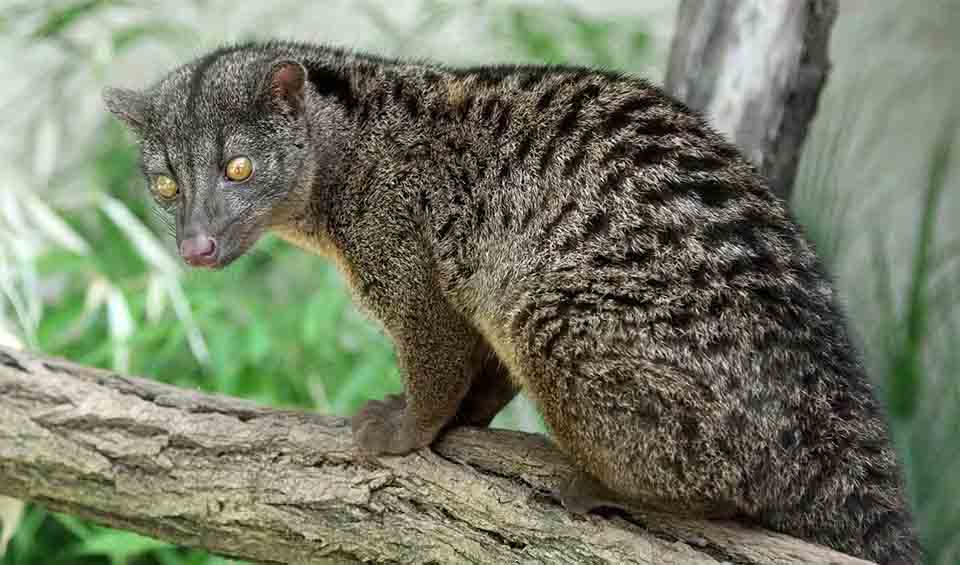An intriguing creature of the night, the African palm civet is native to the tropical rainforests and savannahs of sub-Saharan Africa. Unlike its name suggests, the African palm civet is not a true civet and does not belong to the family Viverridae; instead, it occupies its own unique family, Nandiniidae. This distinction underlines its evolutionary divergence from other civet-like mammals, showcasing the diversity of the African continent’s wildlife.
The African Palm Civet is predominantly nocturnal, showing peak activity just before sunrise and after sunset. Its nocturnal habits allow it to forage for food under darkness, minimizing the risk of predation. During the day, these animals seek refuge in the dense foliage of trees or in the secluded nooks of the forest, where they can sleep undisturbed and camouflaged from potential threats, including humans.
Communication among African Palm Civets is facilitated through a combination of scent markings and vocalizations. These animals possess specialized scent glands located on their lower abdomen, under the chin, and on their feet, which they use to mark their territory and communicate with other civets. The musk produced by these glands has a specific scent that is unique to each individual. In addition to scent marking, they also emit hooting calls that play a crucial role in their social interactions, particularly during mating season or when signaling an alarm.
African Palm Civets are omnivorous, with a diet that includes a wide variety of fruits, small insects, and occasionally small vertebrates. Their preference for fruits such as figs and palm fruits contributes to seed dispersal, making them vital players in their ecosystems. Their ability to consume a diverse array of foods underscores their adaptability to different environmental conditions.
Distribution
 Angola
Angola Benin
Benin Burundi
Burundi Cameroon
Cameroon Central Af. Rep.
Central Af. Rep. Congo-Brazzaville
Congo-Brazzaville Côte D’ivoire
Côte D’ivoire DR Congo (Kinshasa)
DR Congo (Kinshasa) Equatorial Guinea
Equatorial Guinea Gabon
Gabon Gambia
Gambia Ghana
Ghana Guinea-Bissau
Guinea-Bissau Guinea
Guinea Kenya
Kenya Liberia
Liberia Malawi
Malawi Mozambique
Mozambique Nigeria
Nigeria Rwanda
Rwanda Senegal
Senegal Sierra Leone
Sierra Leone South Sudan
South Sudan Tanzania
Tanzania Togo
Togo Uganda
Uganda Zambia
Zambia Zimbabwe
ZimbabweAnything we've missed?
Help us improve this page by suggesting edits. Glory never dies!
Suggest an editGet to know me
Terrestrial / Aquatic
Altricial / Precocial
Polygamous / Monogamous
Dimorphic (size) / Monomorphic
Active: Diurnal / Nocturnal
Social behavior: Solitary / Pack / Herd
Diet: Carnivore / Herbivore / Omnivore / Piscivorous / Insectivore
Migratory: Yes / No
Domesticated: Yes / No
Dangerous: Yes / No




